San Jose's Green Vision Helps Spur Silicon Valley Economic Growth
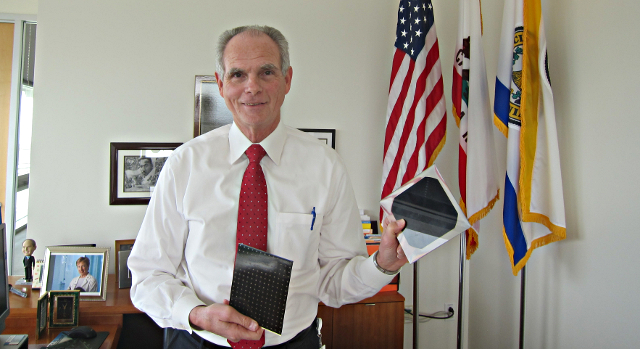
San Jose's Green Vision Helps Spur Silicon Valley Economic Growth
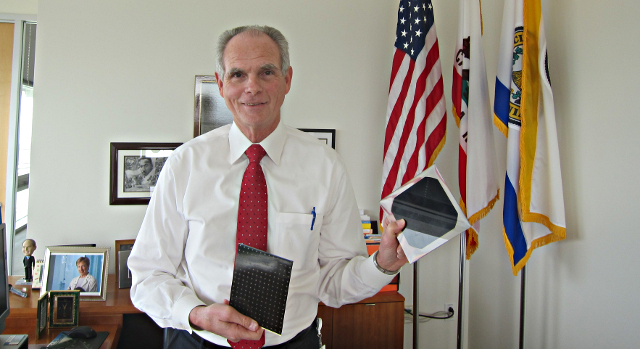
Silicon Valley is well known for being the cradle of tech innovation, but its largest city, San Jose, wants to claim the title as the world center of cleantech innovation too. In 2007, the city launched its green vision, a 15 year road map to make San Jose one of the nation’s greenest. City leaders have just released a report card on their ten ambitious goals at the one third marker. Let’s take a look at their green progress; and its impact on the local economy and the environment.
Green mayor, green building
Mayor Chuck Reed sits in a sunny corner office on the 18th floor of San Jose’s City Hall, the first city hall in the nation to achieve a platinum certification, the highest green building award. He’s looking through a new report on how the city is doing. Five years after announcing his ambitious green vision plan, the city is on track to reach its goal of creating 25,000 new cleantech jobs by 2022.
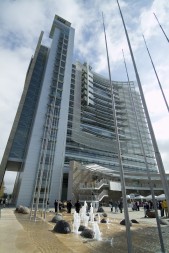
“We started down this road trying to tie the environment and the economy together. So having 10,000 cleantech jobs is a big plus,” Reed says.
The nation’s 10th largest city has nine other goals, including one to divert 100% of its trash from landfills. San Jose is currently diverting 73% of its trash. This compares to San Francisco’s reported figure of 80%.
Already a plastic bag ban in San Jose has reduced bag litter by 89% in the storm drain system and the city council is moving toward banning Styrofoam containers.
Ambitious Goals
One of San Jose’s most ambitious goals is to get all of its electricity from renewable energy. With 10 years to go before the deadline, it’s reached just over 20% and needs to accelerate progress.
“That’s going to mean radical changes, but this is a valley that does things in radical ways,” says Carl Guardino, president of the Silicon Valley Leadership Group (SVLG), which represents hundreds of local businesses.
“Silicon Valley and San Jose Mayor Reed sets audacious goals,” adds Guardino. “If we fall a little short, just think of how far we would have come.”
San Jose has helped change national standards for LED street lights and is now saving thousands of dollars using efficient, dimmable street lights. Yet it’s only replaced 4% of its 62,000 lights.
Using other people’s money
Despite making progress, it’s been a tough road through the recession. Like most U.S. cities, San Jose has faced severe budget constraints and was forced to be innovative in funding its green vision.
The city has managed to leverage more than $100 Million in federal tax credits and private and public funds to move forward.
“I said from the beginning that the key to being able to succeed with our green vision was to work with other people’s money,” says Mayor Reed, who is known for his pragmatism.
Of course, it helps to be located in the center of one of the country’s most innovative regions, according to Kim Walesh, director of economic development for the city.
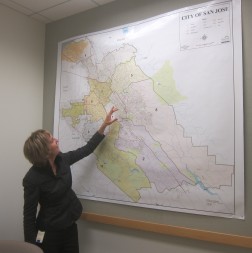
“Being the large anchor city in Silicon Valley, we are remarkably open to new ideas, to thinking differently and we’re scrappy, so we know how to pull resources together toward a common goal and leverage, leverage, leverage,” says Walesh.
The city has certainly leveraged its sunny climate. According to state regulators, San Jose has installed more solar panels on its private and public buildings than any other California city.
“Southern California sun doesn’t hold a candle to our aggressive goals for solar installations in sunny San Jose,” says a jubilant Walesh.
The challenge of higher hanging fruit
But others, like Megan Medeiros with the Loma Prieta Chapter of the Sierra Club, paint a less rosy picture.
“San Jose has already picked off the low hanging fruit of their green vision,” says Medeiros, who feels the city has prioritized productivity before efficiency.
She’d like to see a lot more energy efficiency measures like green building taking place. So far, the city has only built, or retrofitted, 13% of its goal of 50 Million square feet of green (private and public) buildings.
San Jose is doing better with its efforts to cut per capita energy use in half; it’s 25% of the way to its goal.
Medeiros suggests San Jose adopt Palo Alto’s carbon neutral goal or try to take the lead in alternative transportation like San Francisco has with its popular car share communities and mass transit system. But San Jose has had some success with its own public fleet of vehicles: 40% now run on alternative fuels.
Medeiros would like to see San Jose building more pedestrian and bicycle paths and planting more trees.
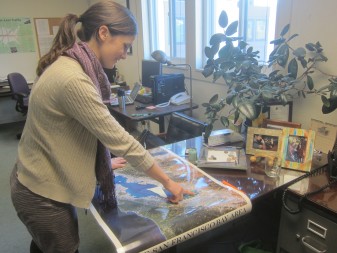
If it did that, it could be attracting a lot of younger people who, Medeiros says, are “flocking to San Francisco” because it provides them with a better quality of life.
The economic impact of green
But SVLG’s Carl Guardino praises cities such as San Jose that have taken big steps toward more sustainable economic growth.
“Both San Jose and San Francisco, they have taken tremendous strides, along with Mayor Bloomberg in New York, in being on the cutting edge of innovation, of the green economy, working as a public sector to bolster private sector success,” he says.
San Jose’s Kim Walesh points out that cleantech jobs are an important new driver of the local economy. She cites last year’s Milken Institute report, which described the San Jose metro area as the nation’s number one performing city in terms of jobs and wage growth - thanks to its innovative tech culture. The San Francisco metro region ranked 36.
“We’re not a splashy city that makes a lot of announcements,” says Walesh. “We’re a city of idea generators who also implement. We can talk about the green vision, but we’re really walking the green vision and we’re making some progress.”
Looking to the future, San Jose city officials are abuzz about this summer’s opening of its Cleantech Innovation Center. It’s a partnership with Lawrence Berkeley National Lab and will offer a demonstration center for cleantech startups to test, showcase and speed commercialization of their green products.
To see all of San Jose’s green goals and how it’s measuring up, check out San Jose’s Green Vision Progress Report for 2012.
